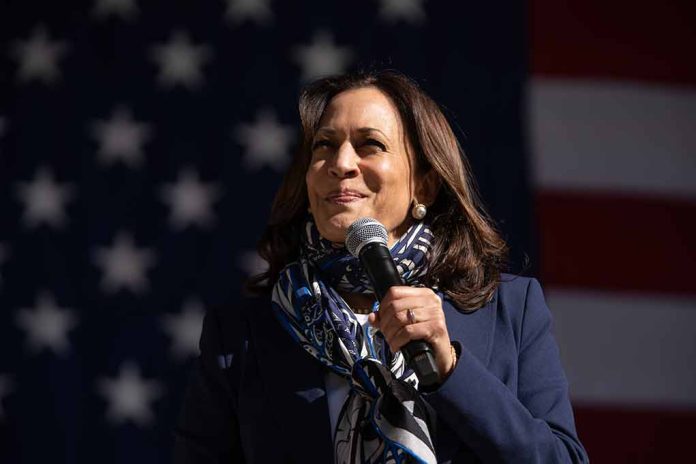
Vice President Kamala Harris’s campaign strategy takes an unexpected turn as she distances herself from President Joe Biden amid growing election tensions.
At a Glance
- Harris’s campaign is deliberately creating distance from Biden’s administration.
- No joint campaign events are planned, despite Biden’s willingness to appear together.
- Harris’s team views Biden’s low popularity as a potential liability.
- Internal friction is evident as support for Harris from Biden’s camp wanes.
- Harris struggles to balance loyalty to Biden with the need to present herself as a “change” candidate.
Harris’s Delicate Balancing Act
As the 2024 election approaches, Vice President Kamala Harris finds herself in a precarious position. Her campaign is actively working to create separation between her candidacy and President Joe Biden’s administration, a move that has raised eyebrows in political circles. This strategy is born out of concern over Biden’s low approval ratings and the potential negative impact on Harris’s own political aspirations.
The tension between loyalty to the current administration and the need to chart her own course is palpable. Karl Rove, a prominent Republican strategist, has weighed in on Harris’s dilemma, suggesting that her unwavering support for Biden may be misguided.
“She needs to focus on what’s best for her, and not worry about hurting his feelings.” – Karl Rove
This advice underscores the challenging position Harris finds herself in as she attempts to navigate the complex political landscape.
Campaign Strategy Shift
The Harris campaign’s strategy appears to be evolving, with a clear emphasis on presenting the Vice President as a harbinger of change rather than a continuation of the current administration. This shift is evident in her campaign messaging, which contrasts sharply with Biden’s approach. Harris is positioning herself as a “happy warrior,” focusing on future-oriented themes and emphasizing issues such as freedom, poverty, gun violence, and environmental concerns.
“Instead of being focused on the politics of the past, we need to be thinking about the future” – Kamala Harris
This statement clearly illustrates Harris’s attempt to differentiate herself from the Biden administration while still maintaining a semblance of unity with the Democratic Party’s platform.
Growing Tensions and Campaign Challenges
The strategic distancing has not been without its challenges. Reports suggest that there are no scheduled campaign events featuring both Harris and Biden before Election Day, despite Biden’s apparent willingness to appear together. This has led to speculation about growing tensions between the two camps.
“Harris’ team believes Biden is a political liability at a crucial time in the campaign — but is reluctant to directly say they don’t want him to campaign for her” – Axios’s Alex Thompson
This reluctance to openly reject Biden’s involvement highlights the delicate balance Harris must maintain. She needs to chart her own course without appearing disloyal to the administration she has been a part of.
Policy Distinctions and Future Outlook
While Harris’s campaign relies heavily on Biden’s accomplishments, she has proposed some distinct policies. These include increasing the small business startup tax deduction, providing down payment assistance for first-time homebuyers, and suggesting a lower capital gains tax than Biden’s proposal. On foreign policy, Harris has shown some separation from Biden, particularly regarding the Israel-Hamas conflict.
“Israel has a right to defend itself, and how it does so matters” – Kamala Harris
As the election draws closer, it remains to be seen how Harris will navigate the complex political landscape. Her ability to balance loyalty to the current administration with her own political aspirations will likely play a crucial role in shaping the Democratic Party’s future and her own political career.
Sources:
- Report: Kamala Harris’s Campaign Giving Joe Biden the Cold Shoulder
- Kamala Harris Too ‘Worried About Hurting Biden’s Feelings’: Bush Adviser
- The new Democratic presidential ticket: what’s changed and what remains the same






















